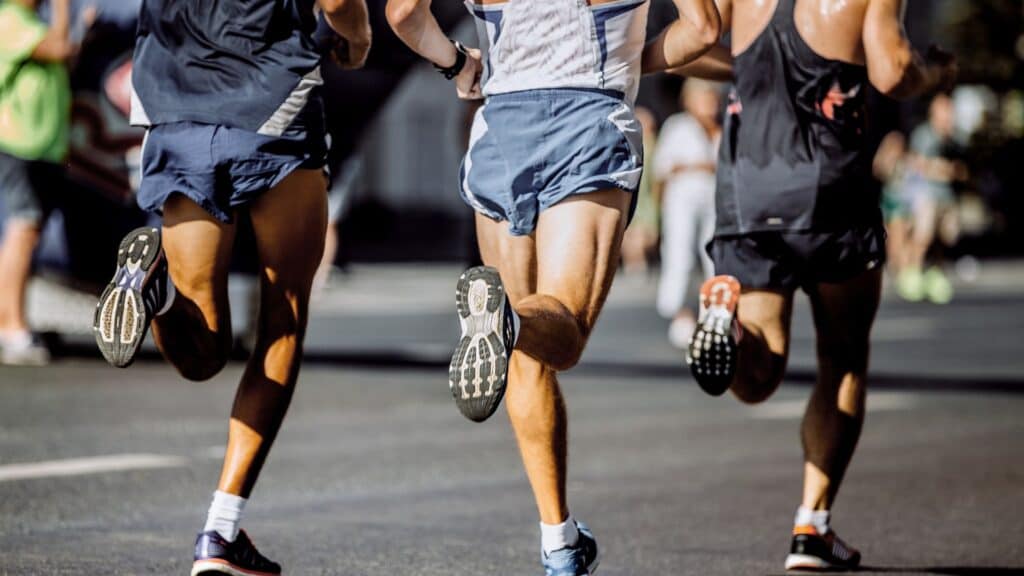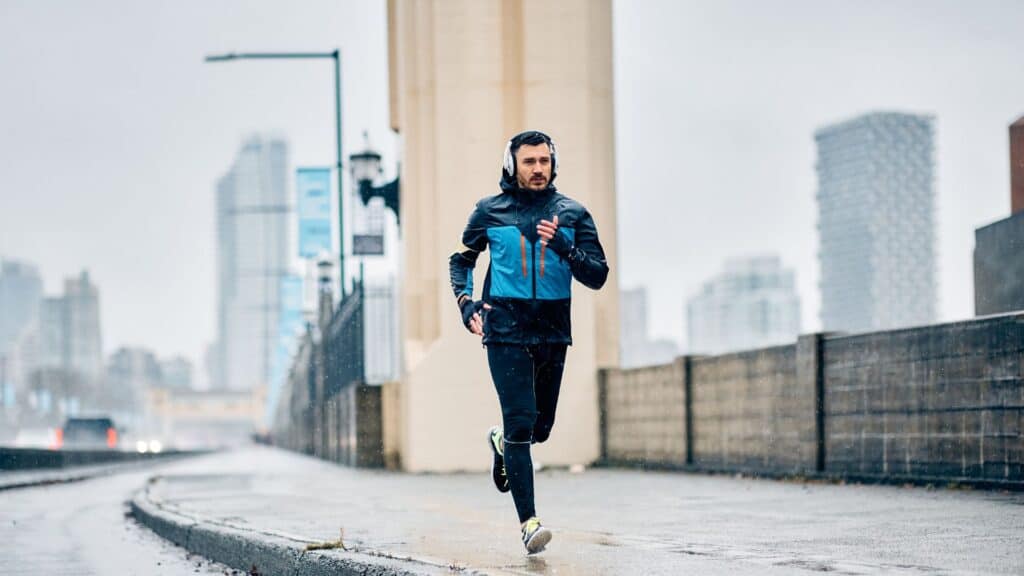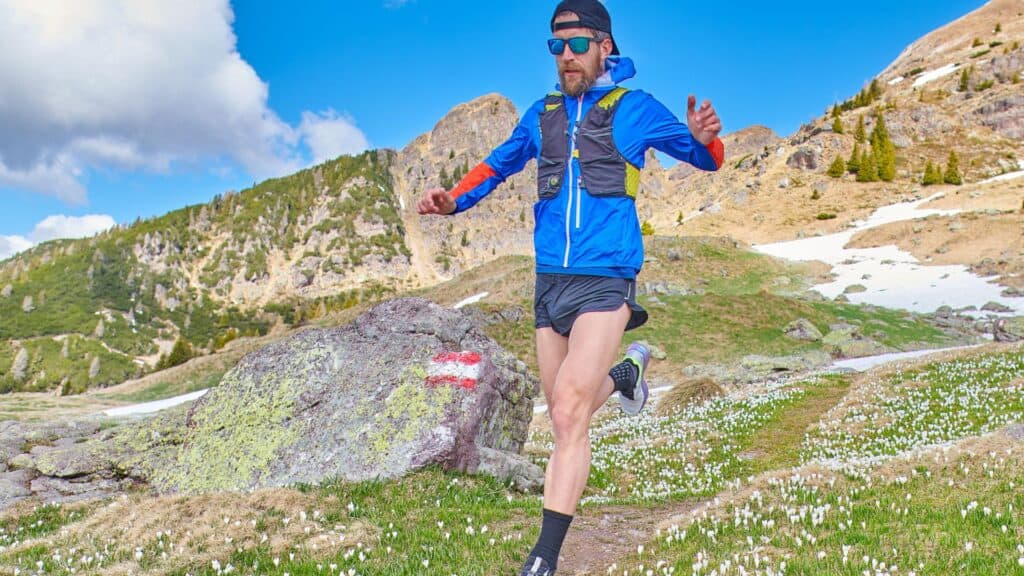You’ve probably worried about the economy on a daily basis. How do I spend less and get more? How do I make my money go further? All important considerations, but, have you considered your running economy?
Is your body using too much oxygen when you run? How can you cut back on your oxygen usage? SHOULD you even be cutting back? If you have no idea what running economy is and why it’s important, then lace up and read on.
Improving your running economy will ultimately improve your performance.
Running economy is the energy demand for a given velocity of running or more simply: How much oxygen or energy your body needs to run at a particular pace.
Running economy is determined in a lab test where the amount of oxygen (measured in fluid ounces) used per pound of body weight per mile is calculated using a treadmill and a gas analyzer. Running Economy is particular for each different distance and space. The lab test will test your economy over a range of speeds and paces. Various factors influence running economy and having a good running economy is important, particularly if you are a distance runner.
Whatever your distance, 5k (3.1 miles), 10k (6.2 miles), half marathons, or ultras, working on improving your running economy should be a key focus point.

What Is a Good Running Economy?
A good running economy means that your body will be using less oxygen per mile or kilometer while you run to maintain a specific pace. To run economically you want to be able to go further by using as little gas (oxygen) as possible.
Your running economy can be influenced by many different factors and we’ll share some tried and trusted ways to improve it.
What Influences Running Economy?
- Metabolic Rate
- Cardiorespiratory System
- Biomechanical Factors
Genetics plays an important role in running the economy. Your metabolic rate, cardiorespiratory system, biomechanics, and neuromuscular system all influence how efficiently your body performs during running. The ceilings of these factors, unfortunately, are predetermined. But that doesn’t mean your running economy and these factors can’t be improved.
Metabolic Rate
Your Metabolism is the rate at which the chemicals in your body change food into energy. The metabolic rate varies from person to person and is largely dependent on your body size. So a heavier person would require more energy to convert food into fuel than someone who weighs less.
Body temperature and muscle fiber type also influence your metabolic rate. If your body temperature is higher, your circulation increases, and you sweat more which ‘wastes’ energy. To compensate for this your body increases your oxygen consumption which results in a less efficient running economy.
Genetics also determines the muscle fiber makeup of your body. An individual with more oxidative muscle fibers tends to have a better running economy as these muscle fibers produce more energy when using oxygen.
Cardio-Respiratory System
Your cardiorespiratory system is made up of the heart, blood vessels, and lungs, and the rate at which they are able to work together to deliver oxygen to the muscles that are working, in this case, your running muscles. An individual with a lower working heart rate while running uses less energy to pump blood to the muscles which reduces the amount of oxygen used at a particular running intensity.
Biomechanical Factors
Your Biomechanical makeup or how you are built also has an effect. Do you have long legs? Are you tall or short? These factors all influence your running economy. Ground contact, your stride length, and the stiffness of your muscles and their elastic recoil, all work together to determine how you run and in turn, your running economy. If your biomechanics result in you having a longer ground contact time, your running economy is less efficient.
Even your Neuromuscular system influences the way your muscles and nerves work together when you run.
Everyone is born and built a little differently, so a tall runner might have a biomechanical advantage over a shorter runner when it comes to running economy. However, a shorter runner who weighs less and perhaps has longer legs relative to their overall height may have a greater biomechanical and chemical cost advantage relative to movement. Even your shoes can play a role! The good news is, that no matter your build, height, weight, fitness, heart rate, or biomechanical makeup, with a little bit of hard work, you can improve your running economy and ultimately, your running performance.

Economical Steps In The Right Direction
Improving Your Running Economy Starts With A Good Training Plan
The number one way to improve your economy is to have a good training plan in place and to follow it consistently.
We offer various plans for various distances. Grab your custom plan structured to your individual needs here!
Finding the right plan is your first step towards running more economically.
Increase Your Mileage – Improve Your Economy
The best way to improve your running economy is to increase your mileage. The safest way to do this without injuring yourself is to follow the 10% rule. Never increase your mileage by more than 10% at a time per week. A proper training program should take this into account and increase your mileage taking your current fitness level into account.
Part of increasing your mileage is endurance training. Endurance training should increase your heart rate to above 50% of your maximum. This improves the respiration capacity of your muscles. Continuous longer-duration training is very effective in improving running economy. So don’t forget the low-intensity slow runs when training for your endurance events. These should be part of your weekly training program.
Long Interval Training
Chat with our coaches about incorporating higher-speed running sets broken up with a short rest in between. This is also known as a Long Interval Training session.
An example would look like 4 minutes of hard (faster) running followed by 2 minutes of rest, repeated 5 times for one session a week.
Intervals are a great way to boost your economy and get you running for longer.
Don’t Just Run – Work Out
Never underestimate the importance of resistance training as part of improving your running economy. Resistance training helps with neuromuscular functioning. Squats and bicep curls help to increase the elastic energy stored in these muscles in the buildup phase before the ‘push-off’ stage of running.
Explosive weight training will improve running economy by stiffening up the tendons – this improves the efficiency of energy transfer in the tendons. Explosive training combines strength and speed to increase your power output. Consider incorporating squats, weighted or dynamic step-ups, a walking overhead lunge, and sprints into your training program.
Get Stronger – Run Longer
Incorporating strength training is key to improving your running economy and efficiency. Strength training also improves joint stability, which reduces the need to use stabilizer muscles which in turn reduces the energy cost of running.
Good strength training exercises to include in your program include: Single leg squats, forward and backward lunges, single leg deadlifts and calf raises for the lower legs.
Exercises like toe raise and forward & lateral band walks, for example, are perfect. Our free strength training plan is a great place to start and you can download it by clicking here.
Hit The Hills
Hill repeats may feel like an uphill battle, but just six weeks of high-intensity hill repeats will improve your running economy. Hill repeats strengthen key running muscles and have a positive impact on your endurance levels. Longer hills will improve your aerobic capacity, while shorter hills will improve strength and speed.
Vary your hill training with long hill repeats, short hill repeats, and downhills. Also, look for different hill gradients to mix it up.
If you’re not sure how to calculate the gradient of the hills, we have a useful gradient calculator to help you out.
To get the most out of your hill repeats, make sure you execute them correctly. Start with an easy run of 10 to 20 minutes and some dynamic stretching, squats, high knees and butt kicks.
Start at the bottom of a short hill and run up at a fast pace maintaining good form. Engage your core and drive your knees upwards and forwards. Swing your arms low and close to the sides of your body. As you run up, you should start to breathe heavier and feel your heart rate increase.
When you reach the top of the hill, turn around and jog back down slowly. Concentrate on your breathing – in through your nose – out through your mouth – and allow your heart rate to lower.
If you’re a beginner, start with two to three reps per session, increasing the number of reps per session over a two to three-week period.
Remember to end your hill session with a 5-minute cooldown and some active stretching that targets your glutes, calves, hamstrings, and quads.

Podcast – Run Fast
An interesting 2021 study by the Human Kinetics Journals found that switching off while you run can actually switch on your running economy. An interesting distraction, like the Ask Coach Parry Podcasts (https://coachparry.com/podcasts/ ) or a great running playlist, may result in using less oxygen and lower your rate of perceived exertion because you are distracted by other things. So download your distraction of choice and hit the road.
Cushioning Your (Running) Economy
Let’s not forget about the sole of your running experience, your shoes. Exeter University Scientists in collaboration with Nike Global Sports Research Laboratory found that higher cushioning in your shoe boosts running economy. This could be a game-changer when choosing your next pair.
Cushioned running shoes are essentially wider, thicker, higher, and softer running shoes. They feature a thick, plush foam midsole which offers a thick buffer between your foot and the ground. With the addition of this ultra-lightweight foam, these shoes can deliver an energizing stride, with a greater rebound and improved running economy.
According to Runner’s World, the top 5 cushioned running shoes in 2023 are:
Track Your Performance
Running economy is usually measured in a lab, on a treadmill, with a mask. Not many of us have access to this kind of equipment to keep track of our performance or measure our running economy, but you can track your progress at home.
Test yourself:
Run your local time trial. It’s a measure of the same distance over the same course every week. Starting with an easy 10-20 minute warm-up which should be followed by 2-4 accelerations to activate the legs.
When you are properly warmed up, run a 20-minute time trial, all by yourself, with no other runners, and no distractions. Run your 20 minutes at the maximum pace that you can sustain for the whole time. At the end of your 20 minutes, you should be exhausted. Record your average heart rate, pace, and distance. Don’t forget to cool down for 10 to minutes and do some light stretching.
Keep a record of your results and over time, with the correct training you should see an increase in the pace and distance you cover and an overall improvement in your running economy. You can also share this info with your coaches who will work out the best ways to help you improve.
Running economy is influenced by many factors, including your genetic make-up and no two runners are built the same. Even though you may not be able to improve your genetics, with the correct exercises, training, and running consistency, you can improve your running economy and your overall performance. This is especially important for you if you are training for a marathon or half marathon. Time to tighten your laces and get running – the economical way.



Comments are closed.